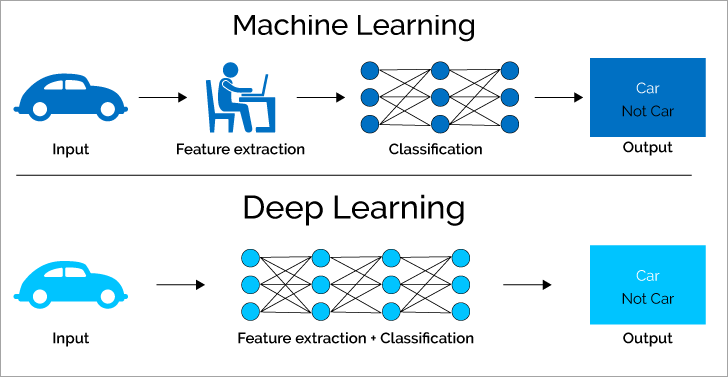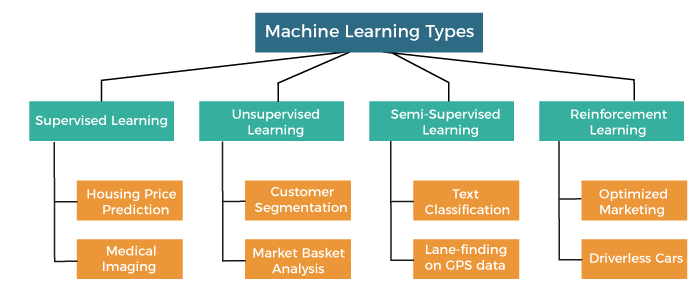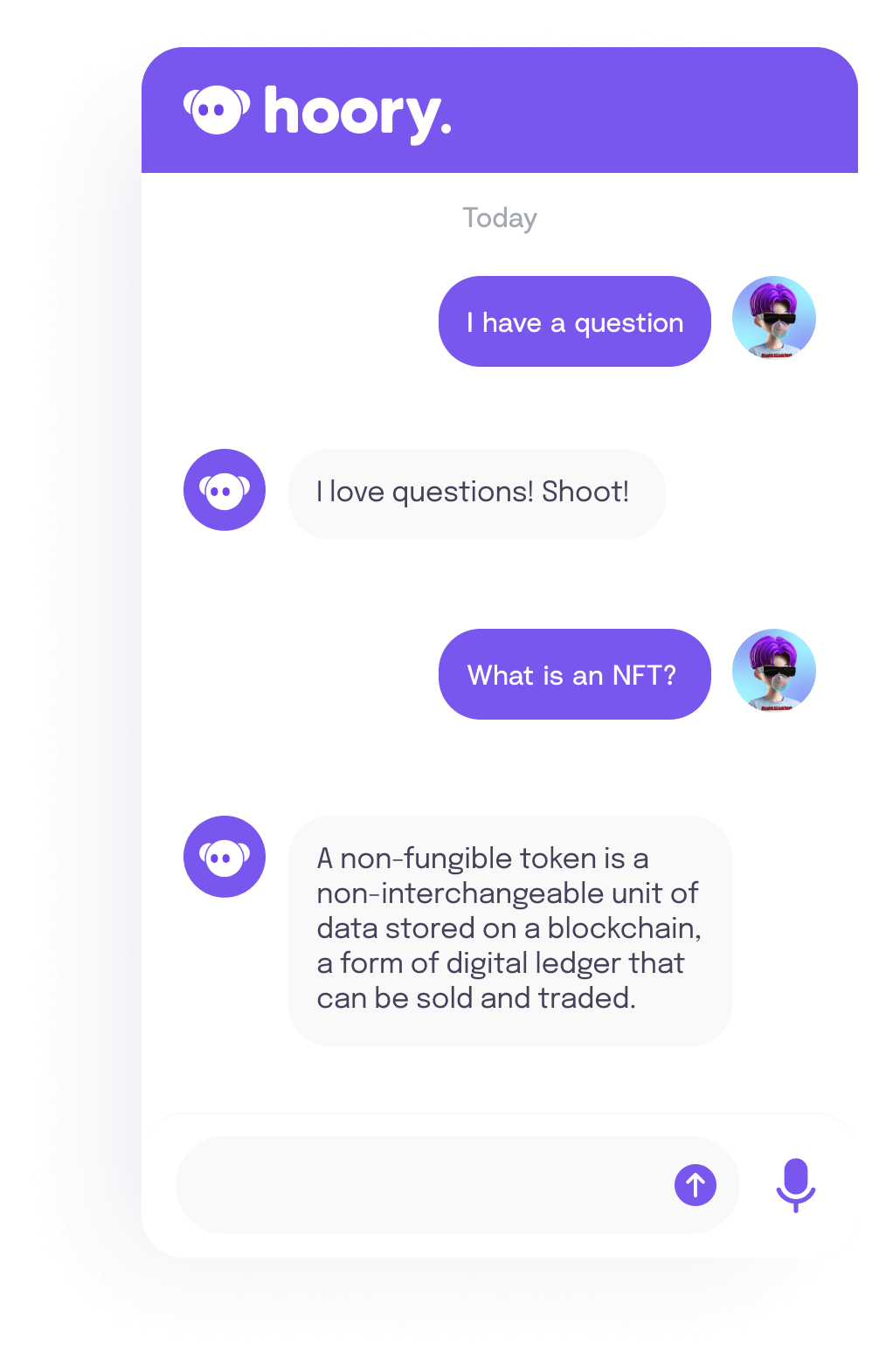What Is Machine Learning and How Does It Work?
• Customer Support
• FastBank

-
When was the last time you learned something new? Although learning is an integral part of our lives, we’re mostly unaware of how our brains acquire and implement new information. But understanding the way humans learn is essential to machine learning — a study that replicates our way of learning to create intelligent machines.
As one might expect, imitating the process of learning is not an easy assignment. Still, we’ve managed to build computers that continuously learn from data on their own. Today, machine learning powers many of the devices we use on a daily basis and has become a vital part of our lives.
Read on to discover more about machine learning, how it differs from AI and deep learning, and more!
What Is Machine Learning?
Back in 1959, IBMer Arthur Samuel coined the term machine learning. It is also believed that it was he who provided the first definition of it, although some will surely argue about that. What is certain is that his 1959 paper did hint toward a universal explanation:
“the field of study that gives computers the ability to learn without being explicitly programmed.” (Source)
From this definition, many new versions have sprung up in time. Here are a few alternative interpretations:
“Machine learning is a branch of artificial intelligence (AI) and computer science which focuses on the use of data and algorithms to imitate the way that humans learn, gradually improving its accuracy.” (1)
“Machine learning is an application of artificial intelligence (AI) that provides systems the ability to automatically learn and improve from experience without being explicitly programmed.” (2)
Regardless of which definition you prefer, what should be noted is that machine learning (ML) is an important part of artificial intelligence (AI) that enables machines to learn and improve performance independently.
Machine Learning vs AI
Although very closely related, machine learning differs from artificial intelligence and has stemmed from the goal of creating AI. The easy way to get the hang of this is to imagine ML as a powering tool for artificial intelligence.
Here is a complete picture:

ML gradually grew into a separate field and changed its goal from achieving artificial intelligence to solving various practical problems. Machine learning models study given data to identify any existing patterns and make predictions. This is one way in which computers develop their “intelligence.”
Whereas machine learning algorithms are something you can actually see written down on paper, AI requires a performer. It is through a virtual assistant, a bot, or any other system powered by AI that we can actually observe and make use of it.
For example, Siri is a "smart" tool that can perform actions similar to humans, such as having a natural conversation. There are many factors making Siri "artificially intelligent," one of which is its ability to learn from previously collected data. And that's accomplished using machine learning algorithms.
Deep Learning vs Machine Learning
Deep learning is a subdivision of ML which uses neural networks (NN) to solve certain problems. Neural networks were highly influenced by neuroscience and the functionalities of the human brain. Through pattern recognition, deep learning techniques can perform tasks like recognizing objects in images or words in speech.
While deep learning can work with unstructured, unlabeled data, other forms of “non-deep” learning require aid from humans to learn. The image below is a great representation of this:

Source: Software Testing Help
Why Is Machine Learning Important?
While machine learning algorithms haven’t yet advanced to match the level of human intelligence, they can still outperform us when it comes to operational speed and scale. Machines have the capacity to process and analyze massive amounts of data at a rate that humans would be unable to replicate. They can work 24/7 with no rest, speeding up the process further.
Through various machine learning models, we can automate time-consuming processes, thus facilitating our daily lives and business activities. For many companies, the use of ML has become a significant competitive advantage, allowing them to scale their product development, customer services, or operational processes.
How Does Machine Learning Work?
The study of algorithms that can improve on their own, especially in modern times, focuses on many aspects, amongst which lay the regression and classification of data. In order to achieve this, machine learning algorithms must go through a learning process that is quite similar to that of a human being.
In his 1997 book entitled Machine Learning, Tom M. Mitchell introduces a technical outline of this learning process:
“A computer program is said to learn from experience E with respect to some class of tasks T and performance measure P if its performance at tasks in T, as measured by P, improves with experience E.”
Mitchell’s operational definition introduces the idea of performing a task, which is essentially what ML, as well as AI, are aiming for — helping us with daily tasks and improving the rate at which we are developing.
In this sense, machine learning models strive to require as little human intervention as possible. After a data scientist designs machine learning algorithms, the computer/machine should carry out the learning process by itself, which can be realized in several different ways.
Types of Machine Learning
The four main types of machine learning represent different approaches to the core learning process:
-
Supervised learning
-
Semi-supervised learning
-
Unsupervised learning
-
Reinforcement learning

Source: Javatpoint
Supervised Learning
This is where the computer algorithm is fed a known set of labeled data. The algorithm then has to analyze it and make predictions in order to reach its goal (or, in more technical terms, the output). The human operator is aware of both the problem and the solution and has specified the variables the algorithm should assess. The operator actively supervises the algorithm's performance, hence the term “supervised learning.”
Semi-Supervised Learning
Semi-supervised learning works the same way as supervised learning, but with a little twist. Whereas in the above method, an algorithm receives a set of labeled data, the semi-supervised way puts it to the test by introducing unlabeled data also.
Usually, it uses a small labeled data set in contrast to a larger unlabeled set of data. Guided by the labeled data, the algorithm must find its own way of classifying the unknown data. As the cost of labeled data is much higher than that of unlabeled, semi-supervised learning is a more cost-friendly training process.
Unsupervised Learning
Unsupervised learning eliminates labels entirely. With this method, machine learning algorithms find patterns in raw data. The self-learning system must analyze the available data and make sense of it through clustering — that is, finding similar data points and grouping them accordingly.
Unsupervised machine learning allows to segment audiences, identify text topics, group items, recommend products, etc. The key benefit of this method is the minimal need for human intervention.
Reinforcement Learning
Reinforcement learning is all about testing possibilities and defining the optimal. An algorithm must follow a set of rules and investigate each possible alternative. This method is vital as it introduces the concept of trial and error.
An algorithm is set to complete a task while receiving positive or negative signals along the way. In this way, it’s being reinforced to follow a certain direction, but it has to figure out what actions to take on its own. Robotics, gaming, and autonomous driving are a few of the fields that use reinforcement learning.
The Applications of Machine Learning
Machine learning applies to a considerable number of industries, most of which play active roles in our daily lives. Just to give an example of how everpresent ML really is, think about speech recognition, self-driving cars, and automatic translation.
Let’s look further into a few areas that use ML.
Automated Customer Support
As consumer expectations keep rising, businesses seek to find new, efficient ways to improve customer service. Machine learning helps companies automate customer support without sacrificing the latter’s quality in the process.
Machine learning powers many of the virtual assistants that communicate with users in human-like conversations. By integrating ML, businesses reduce response wait times, serve more clients, and cut costs associated with maintaining a large support department. Machine learning can also help reveal important insights into customer behavior by analyzing user data and making predictions.

Finance
The finance and banking industry uses machine learning as a security measure to monitor and analyze financial information. ML models trained on historical data can recognize underlying patterns in financial activities, thus detecting unauthorized transactions, suspicious log-in attempts, etc.
Traffic and Transport
Transportation is yet another sector that has found several practical applications for machine learning. ML techniques are used to facilitate navigation, identify effective routes to reduce traffic, and solve other transportation issues. The technology is also at the core of self-driving cars that use computer vision to recognize objects and create routes.
Bottom Line
Machine learning has been a game-changer in the way we approach and make use of data. Simply put, it’s the study of training machines to learn from data and gradually improve their performance without being explicitly programmed.
Different ML methods demand varying extents of human supervision. Namely the four main types of machine learning are supervised, semi-supervised, unsupervised, and reinforcement learning.
Although still flawed, ML has made way for significant advancements in modern life. The scope of industries that utilize machine learning is quite wide, including customer service, finances, transportation, medicine, and many more.
Frequently Asked Questions
-
Why is machine learning used?
ML allows us to extract patterns, insights, or data-driven predictions from massive amounts of data. It minimizes the need for human intervention by training computer systems to learn on their own.
-
Who uses machine learning?
From navigation software to search and recommendation engines, most technology we use on a daily basis incorporates ML. Aside from personal use, machine learning is also present in many business activities — e.g., financial transactions, customer support, automated marketing, etc.
-
Why is machine learning the future?
The machine learning market and that of AI, in general, have seen rapid growth in the past years that only keeps accelerating. ML has proven to reduce costs, facilitate processes, and enhance quality control in many industries, urging businesses and data scientists to keep investing in the advancement of this technology.

























